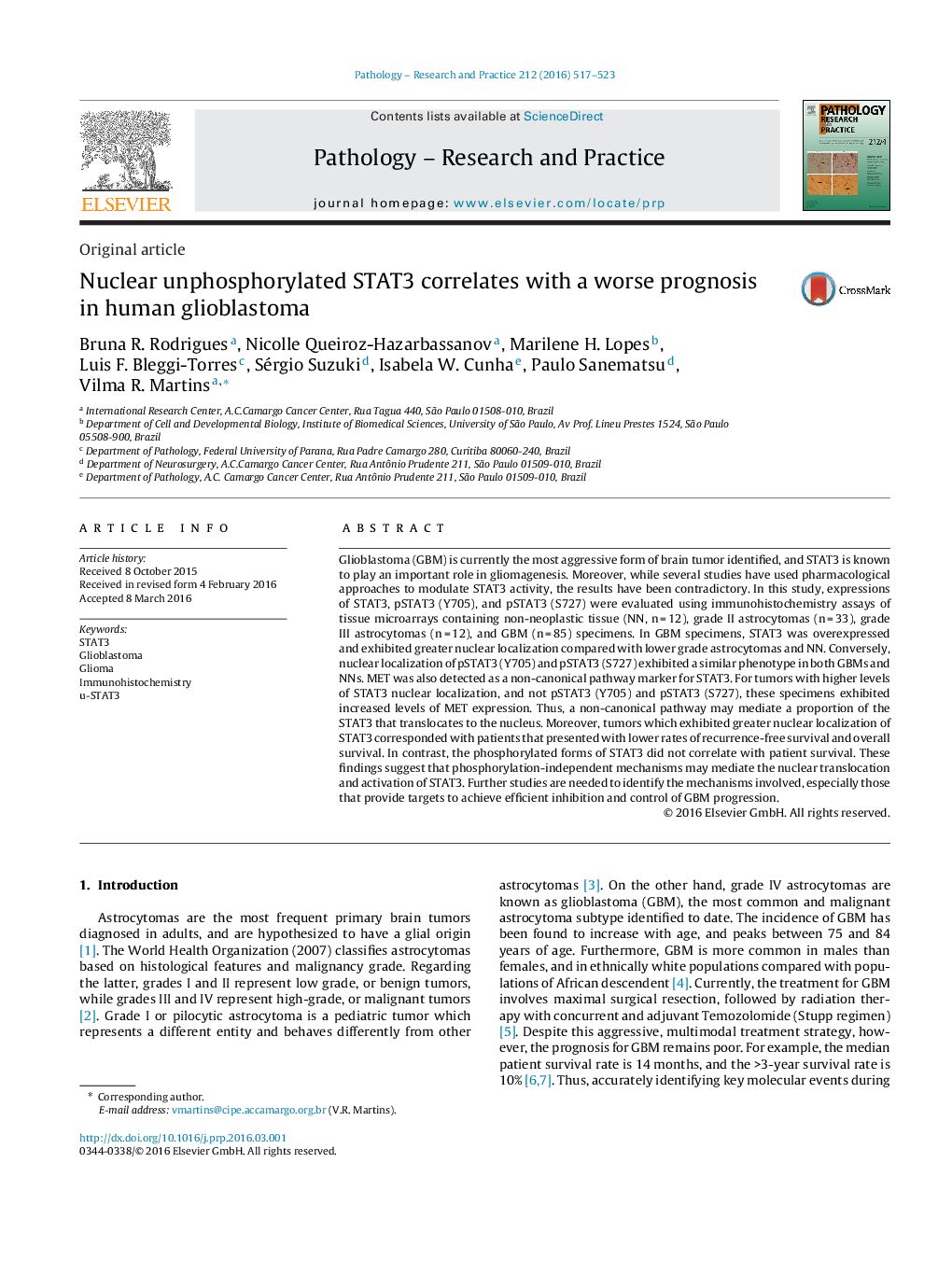| Article ID | Journal | Published Year | Pages | File Type |
|---|---|---|---|---|
| 2155015 | Pathology - Research and Practice | 2016 | 7 Pages |
Glioblastoma (GBM) is currently the most aggressive form of brain tumor identified, and STAT3 is known to play an important role in gliomagenesis. Moreover, while several studies have used pharmacological approaches to modulate STAT3 activity, the results have been contradictory. In this study, expressions of STAT3, pSTAT3 (Y705), and pSTAT3 (S727) were evaluated using immunohistochemistry assays of tissue microarrays containing non-neoplastic tissue (NN, n = 12), grade II astrocytomas (n = 33), grade III astrocytomas (n = 12), and GBM (n = 85) specimens. In GBM specimens, STAT3 was overexpressed and exhibited greater nuclear localization compared with lower grade astrocytomas and NN. Conversely, nuclear localization of pSTAT3 (Y705) and pSTAT3 (S727) exhibited a similar phenotype in both GBMs and NNs. MET was also detected as a non-canonical pathway marker for STAT3. For tumors with higher levels of STAT3 nuclear localization, and not pSTAT3 (Y705) and pSTAT3 (S727), these specimens exhibited increased levels of MET expression. Thus, a non-canonical pathway may mediate a proportion of the STAT3 that translocates to the nucleus. Moreover, tumors which exhibited greater nuclear localization of STAT3 corresponded with patients that presented with lower rates of recurrence-free survival and overall survival. In contrast, the phosphorylated forms of STAT3 did not correlate with patient survival. These findings suggest that phosphorylation-independent mechanisms may mediate the nuclear translocation and activation of STAT3. Further studies are needed to identify the mechanisms involved, especially those that provide targets to achieve efficient inhibition and control of GBM progression.
